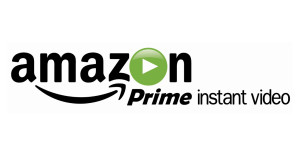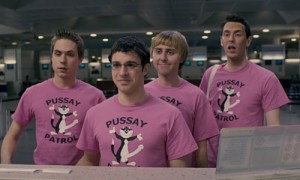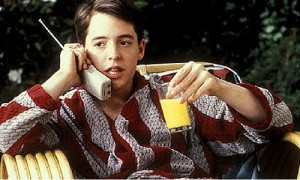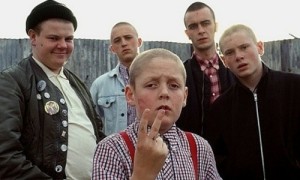
05 Feb Genre: 10 Things You Need To Know About “Labelling”
Posted at 17:12h
in Directors, Film Distribution, Film Sales, Filmmakers, Films, Genre, Uncategorised
0 Comments
What genre is your movie? If it hasn’t got one, pick one. Not two, one. And not a made-up one or one that isn’t one*. And you may need to get over the idea of being pigeonholed while you’re at it.
 What do I mean by “genre”? I mean a label. How you start from the get-go describing what your film is when someone asks “What is it?”. Is it drama, action, thriller? Is it a horror film?
What do I mean by “genre”? I mean a label. How you start from the get-go describing what your film is when someone asks “What is it?”. Is it drama, action, thriller? Is it a horror film?
The genre of horror has also become known as “genre”, and sometimes us lot trip up over this too, but it’s all about context: a genre movie is a horror movie and its genre is genre. Got it? Good.
 Why does it need a label? Filmmakers sometimes balk at being pigeonholed, as if it’s in some way dirtying their art to put it in a box bearing a big ugly label, they want it to be seen as completely original. But everyone else will pigeonhole it: be it the distributor, the TV station or the VOD guys like iTunes or Filmflex, every single one will attribute a genre to it, it’s a shorthand to identifying its potential audience. So yours had better fit in a pigeonhole too, otherwise these guys may assume it doesn’t have an audience.
Why does it need a label? Filmmakers sometimes balk at being pigeonholed, as if it’s in some way dirtying their art to put it in a box bearing a big ugly label, they want it to be seen as completely original. But everyone else will pigeonhole it: be it the distributor, the TV station or the VOD guys like iTunes or Filmflex, every single one will attribute a genre to it, it’s a shorthand to identifying its potential audience. So yours had better fit in a pigeonhole too, otherwise these guys may assume it doesn’t have an audience.- What are the labels? The best thing you can do for yourself is take a look at how those who sell movies to paying customers identify movies by genre.
This is Amazon Prime’s list of genres, which I am using as it has the widest set of genres (no one else has “Indie and Arthouse” as a genre for example), but you can also look at iTunes, FilmFlex etc and get yourself familiar with the labels.
- Action and Adventure
- Animation
- Animé
- Bollywood
 Children & Family
Children & Family- Comedy
- Crime
- Documentary
- Drama
- Fantasy
- Historical
- Horror
- Indie & Arthouse
- International
- LGBT
- Military and War
- Music
- Musicals, Dance & Theatre
- Romance
- Science-Fiction
- Sports
- Teen & Young Adult
- Thriller
- Western
Have a play around in each and see what’s in there and where your film may fit. Be honest with yourself. In the teen section, which you may be convinced your coming-of-age* film – about a teenager who cares for both his alcoholic parents while getting beaten up by his brother for drug money and struggling with chronic alopecia – fits in, ask yourself: do you see anything like that in there? No, it’s The Hunger Games and Maze Runner. Your film is a drama. And if it’s based on a true story set in Manchester in 1851 is it now historical? Have a look see what’s in Historical: Exodus. And while we are at it, do you see a section for “coming-of-age”* movies?
 A label helps you sell it too. We all need a shorthand to sell it, to pitch it, in the simplest possible way and it usually starts with, “What is the genre?” or “What is it?” If I don’t know what it is, things can go awry pretty fast.
A label helps you sell it too. We all need a shorthand to sell it, to pitch it, in the simplest possible way and it usually starts with, “What is the genre?” or “What is it?” If I don’t know what it is, things can go awry pretty fast.
I was once being pitched at (we’ll do pitching later too). It was a story about a guy who had lost someone he loved, was suffering from misery and had moved to a cottage in the country to heal. So far so kitchen-sink*, or so I thought. Then “a mysterious Asian face suddenly appears at the window”. “Erm”, I said, “what genre is this?”. “It’s a ghost story”* he said. “OK,” I said, “I’m sorry but we are going to have to completely rewind this pitch and start again while I readjust my brain”.
 A label helps you set the scene. It’s about putting someone in the right mindset. It’s about setting the scene, the tone and the expectation. But it’s also very much about identifying a potential target audience from the get go and for us to learn about you.
A label helps you set the scene. It’s about putting someone in the right mindset. It’s about setting the scene, the tone and the expectation. But it’s also very much about identifying a potential target audience from the get go and for us to learn about you.
- We Get To Find Out How Much You Know. Good filmmakers are masters of their genre. They watch a lot of movies and they study them. We need to know you know what you are doing. If you don’t, you won’t last long, especially if you are trying to write in a genre that isn’t your genre because you think it’s more likely to get made.
 “Completely original” is scary. All the way down the line, someone, somewhere, is putting your film in a box with a label because they need to sell it to the next person down the line in the most efficient way. Each person in the delivery system will be asking “Who is it for?” and each paying customer will be asking “Is it for me?” Each paying customer decides pretty quickly if it’s for them or not. If they don’t know what it even is…it isn’t. So if you tell me it’s “unique”, “like nothing you’ve ever seen before” or “completely original”, you could end up dismissed as divorced from reality.
“Completely original” is scary. All the way down the line, someone, somewhere, is putting your film in a box with a label because they need to sell it to the next person down the line in the most efficient way. Each person in the delivery system will be asking “Who is it for?” and each paying customer will be asking “Is it for me?” Each paying customer decides pretty quickly if it’s for them or not. If they don’t know what it even is…it isn’t. So if you tell me it’s “unique”, “like nothing you’ve ever seen before” or “completely original”, you could end up dismissed as divorced from reality. Made-Up Genres Are Scary. As above, no label is as bad as a made-up label. My favourite (meaning least favourite) made-up genre is “Modern Day Fairytale”. Find me a single person, a single paying customer, who, when asked what genre of film is their favourite, says “Erm…oooh….it’s got to be Modern Day Fairytale.”
Made-Up Genres Are Scary. As above, no label is as bad as a made-up label. My favourite (meaning least favourite) made-up genre is “Modern Day Fairytale”. Find me a single person, a single paying customer, who, when asked what genre of film is their favourite, says “Erm…oooh….it’s got to be Modern Day Fairytale.”- Label it Appropriately. There’s no point mislabelling your project. If it’s a drama, call it a drama, just make it the best possible drama.
I was once reading a pitch document for a project labelled “a thriller”. I read the synopsis and said that I couldn’t see any thriller elements there, felt more like a drama. Maybe they needed to redo their synopsis? Or is it a thriller I asked. “No” she said, “it’s a drama. But we’ve been told no one wants dramas any more”.
 Watch Out For Genres that aren’t Genres. Take another look at the genres listed in the Amazon Prime list of genres above. So where is “coming of age” or “ghost story” or supernatural for that matter? Or road movie? They aren’t. Coming of age and road movie are formulas, not genres. Take a look at the film images peppered throughout this post. Are all those films the same genre? Are they all coming-of-age? Let’s talk about this further in futire posts.
Watch Out For Genres that aren’t Genres. Take another look at the genres listed in the Amazon Prime list of genres above. So where is “coming of age” or “ghost story” or supernatural for that matter? Or road movie? They aren’t. Coming of age and road movie are formulas, not genres. Take a look at the film images peppered throughout this post. Are all those films the same genre? Are they all coming-of-age? Let’s talk about this further in futire posts.


Sorry, the comment form is closed at this time.